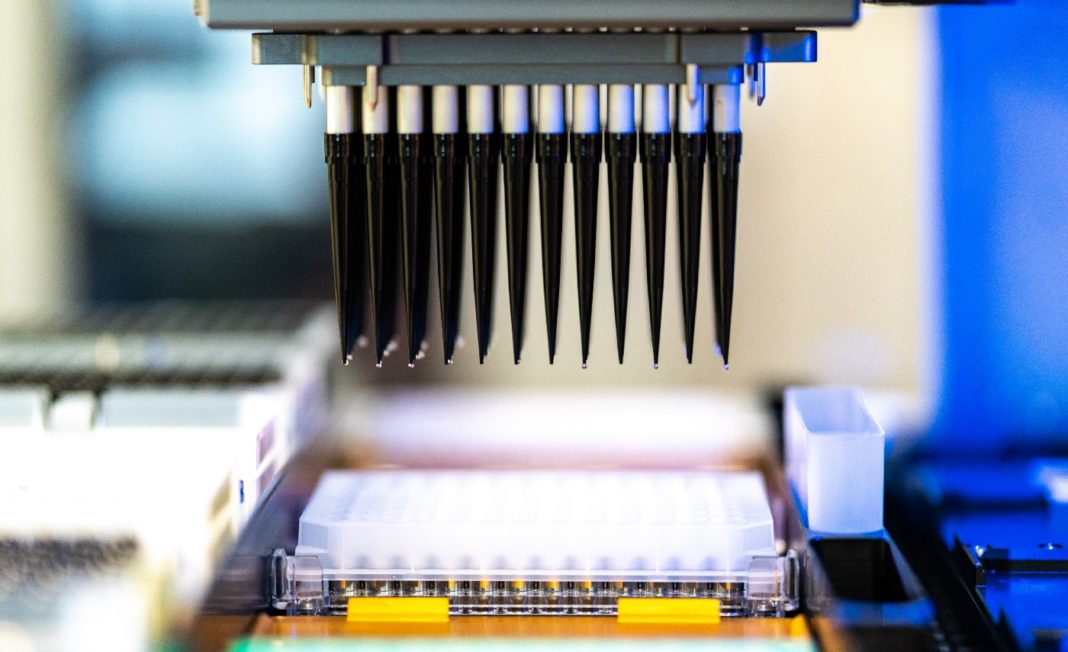Since the beginning of the epidemic, labs have been converting their shuttered spaces and resources into COVID-19 testing facilities. The labs at the University of Washington led the way. The Broad Institute followed with an announcement of the conversion of their clinical processing lab into a large-scale COVID-19 testing facility (see the video at the end of article for more on this process). Then, the announcement from Jennifer Doudna, PhD, the executive director of the University of California, Berkeley’s Innovative Genomics Institute that some of their lab space would be converted for testing. Now, the company Color Genomics, best known for at-home genetic testing for disease risk genes, joins the list. Color announced this week that it is launching a high-throughput, CLIA-certified COVID-19 testing lab.
Three weeks ago, Color began repurposing their services to focus on COVID-19 testing. The company’s lab, which is based in Burlingame, CA, should be up and running within the week. Their goal is a testing capacity of 10,000 tests per day over the coming weeks, returning results back to physicians within 24 hours of receiving samples.

“The Color team has been heads down to bring up our COVID-19 lab,” tweeted Alicia Zhou, PhD, CSO of Color. The last few weeks have been hectic, she added. “I couldn’t be more proud of our amazing team for dedicating their 110% to this effort,” the March 31 tweet noted.
Color already has a robust system in place that is used to make clinical testing highly available, simple to access, and affordable—and to return clinical genetics results to large populations. They have tweaked that system to allow for delivery of COVID-19 results back to patients and support downstream public health workflows.
“We have repurposed Color’s enterprise workforce service to offer a simple, integrated solution that enables public health officials or essential businesses to rapidly deploy a testing service for their frontline workforces,” Othman Laraki, co-founder and CEO of Color Genomics wrote for a blog post on the company’s website.
Color’s offering goes beyond just the black and white response of COVID positive or COVID negative. They noted that, because other labs and public health officials have described the challenges of offering a consistent post-test follow-up, Color is opening their post-test platform to other COVID-19 testing labs for follow-on care, including:
– Patient test result (positive/negative)
– Recommended personal guidelines or instructions (if deviating from national standards)
– Follow up demographic questionnaire
– Contact tracing questionnaire
– Exposed contact outreach
The lab’s initial testing is backed by philanthropic support from industry leaders and private donors. “Everything we are doing relating to COVID-19 is a social contribution,” explained Laraki. “We will seek philanthropic contributions to cover things we can’t subsidize. And everything that we can neither cover ourselves nor through others’ generosity will be done at cost.”

Color’s lab will be operating current FDA-approved protocols. Their research and development team is also actively validating higher-throughput COVID-19 testing techniques, including specialized laboratory protocols, automation techniques, and collection methods.
Color will open-source their model to freely share the designs and protocols of their lab to facilitate the scale-up of labs beyond Color’s. They have established scientific collaborations with the Broad Institute of MIT and Harvard and Weill Cornell Medicine to develop these processes. The goal of the collaborations is to directly increase COVID-19 testing capacity, introduce new testing technologies, and share protocols that can help labs across the United States scale testing capacity more rapidly.
After Color coordinates an onsite clinical staff to administer the tests, they take care of everything else: supplying and provisioning sample collection kits, tools to efficiently offer tests, transport and logistics to Color’s or a partner’s lab, returning results to patients and their physicians, as well as public health workflows, including case management, results reporting to health authorities, triage, and contact tracing.
In order to successfully manage the COVID-19 crisis, noted Laraki, “we will need to deliver hundreds or thousands or even millions of tests per day across the United States, in addition to point-of-care testing.” To achieve that scale, Color believes the country needs a number of high-throughput, high-capacity labs as a national backbone for testing and surveillance.







